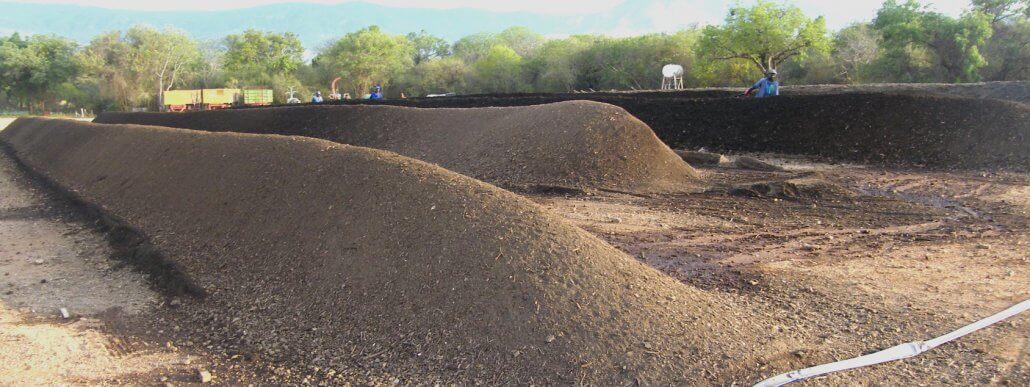
There are many good reasons to compost. These include cost savings on fertilizer, utilization of resources that would otherwise have gone to waste, and reduced environmental impact. Regardless of the reason, composting is a win/win scenario, it is good for the farmer and the environment!
Benefits of compost
There are numerous benefits of applying compost to the soil. They include:
- Increased soil microbial activity (beneficial microorganisms)
- Increased soil fertility
- Plant disease suppression
- Weed seed suppression
- Improved soil organic matter (carbon).
Some practicalities
There are a few important things to note for any farmer interested in creating their own compost. I will discuss a few pointers that can help get you started.
Ingredients
Some of the ingredients that can be used in compost on farms include:
- Wood chips and sawdust
- Animal manure
- Old/discarded feed, such as silage that has gone off
- Tree pruning’s
- Chicken litter
- Grass clippings
- Ash
C: N ratio of compost
Successful composting requires the correct combinations of ingredients. The most important factor determining this combination is the C:N ratio. For composting to occur, there must be a C:N ratio of 25-30:1. Just like humans, microorganisms need food (carbon) to function properly. The C:N ratio of 25-30:1 ensures that there is enough food (carbon) for microorganisms to break down the “waste material” which makes up compost. The nitrogen component is important for protein production. If the C:N ratio isn’t correctly balanced, nitrogen will be lost in the form of ammonia gas. On completion of the compost the C:N ratio will be between 15-20:1.
Things to monitor
There are two important things to monitor in the process of creating compost: 1) temperature, and 2) moisture. Temperature should be monitored on a regular basis. The temperature must be between 32 and 60 degrees Celsius. Excessive temperature results in the death of beneficial microorganisms. Temperature is also an indicator of microorganism activity. If the temperature is too low, then the microorganisms aren’t doing the work of decomposing the ingredients and forming the compost.
Moisture should also be monitored on a regular basis. Just like humans, microorganisms need water to survive and function well. The moisture content should always be between 40 and 60%.
Turning of compost
The measuring of compost temperatures and moisture is of utmost importance, as it indicates when compost needs to be turned. High temperatures and moisture content are an indicator that compost needs to be turned. If the moisture content is low, then water should be added during turning. Compost will be turned between three and six times before it goes into the final curing stage, which takes two weeks. After this, compost can either be used or stockpiled for later use.
Problem solving
Below are some pointers for what actions to take during the process of compost making.
- Compost is too wet: This occasionally occurs after heavy rains, causing the microorganisms to drown and compost to rot. To fix this dry material must be added and turning must occur more frequently.
- Compost smells bad: This means that there is either not enough food (carbon) for microorganisms, resulting in nitrogen being lost as ammonia, or the moisture content is too high and your compost is rotting. To rectify this problem you also need to add dry material and turn more frequently.
- Temperatures not picking up: This is a result of the C:N ratio being out of balance. The C: N ratio must be tested and rectified by adding more carbon or nitrogen-based materials according to the C:N test. Microorganisms will need to be reintroduced by adding more manure or by inoculation.
Conclusion
Nothing need ever be viewed as waste on a farm. Any organic “waste material” generated on a farm can be used to make compost, and this compost can become a highly valuable contribution to improved soil health and fertility. If you can get the C:N ratio, moisture content and temperature of compost correct, then waste becomes a benefit. So my question is, why not compost?
Source
http://www.homecompostingmadeeasy.com/carbonnitrogenratio.html – Accessed 7 May 2019
